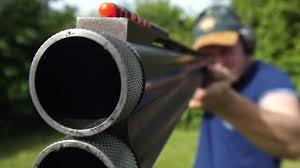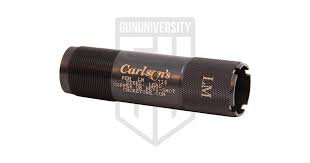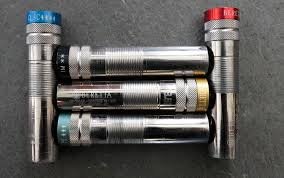
choker: Selecting the optimal best choke for sporting clays can resemble a complex equation with numerous variables that can prove exceptionally challenging to solve. A glance at a shotgun enthusiasts’ forum reveals thousands of pages dedicated to discussing how barrel length, bore diameter, choke constriction, shot size, shot type, and powder charge influence your shot pattern. Adding to the confusion, opinions on these factors often contradict one another, and the genuine facts can be obscured by the marketing jargon employed by various choke manufacturers.
For instance, you might have a grasp of the distinctions between a modified choke and an improved cylinder choke, but how does one company’s improved cylinder compare to another’s “midrange choke” or “clay choke“?

Navigating through the extensive literature available on this subject can be bewildering, leaving your head spinning. Furthermore, pattern testing multiple chokes through your shotgun to account for these variables can become a costly endeavor, leaving you not only several hundred dollars lighter in the wallet but also nursing a rather sore shoulder. Is there a simpler way to determine the most best choke for sporting clays?
To shed light on this, we consulted Jimmy Muller, a NSCA Master Class Shooter, a passionate waterfowl hunter, and the innovative mind behind Muller Chokes.
Best choke for sporting clays
Jimmy Muller embarked on his quest to create the ultimate choke at the tender age of five. Growing up in a family of avid shooters and hunters, with a father and older brother who shared his passion, he developed a deep affection for days spent in duck blinds or at the clay range. As he matured, so did his commitment to the art of wing-shooting.
In his own words, he recounts, “I began duck hunting in 1975, and by 1990, I was eager to elevate my wing-shooting skills. So, I made the decision to venture into the world of sporting clays. Fast forward to 1992, and I fully immersed myself in sporting clays, becoming a significantly improved shooter.
However, it became evident that the chokes available on the market had their shortcomings. They failed to perform as indicated. They were prone to rust, prone to accumulating plastic and carbon fouling, and frequently loosened between stations. It was a consistent issue across the board. In summary, during this period, I was working as an aerospace defense manufacturer. I took matters into my own hands, entered the workshop, crafted my own chokes, and never looked back.”

Initially, Muller created these chokes for his personal use as a dedicated target shooter. Yet, after years of rigorous testing and using his early prototypes, he recognized their commercial potential.
Confident in the quality of his creation, he explained, “I was absolutely certain that I had developed the world’s most consistently patterning choke, the cleanest choke, and the lightest choke. So, I thought, ‘Let’s patent this, bring it out of obscurity, and see if it can help cover the bills.’ That’s precisely what I did, and within two years, it had a transformative impact on the world of clay target sports,” Muller proudly noted.
Shotgun Choke Patterns
Muller chokes distinguish themselves in a competitive market on various fronts, but perhaps their most significant differentiator lies in their ability to deliver consistently even patterns, remaining true to their specified constriction ranges. Anyone who has ever engaged in shotgun patterning knows the meticulous and time-consuming nature of this task. Jimmy Muller, however, took it upon himself to do much of this painstaking work for his customers to spare them the effort.

In his own words, Muller elucidated his approach: “What I accomplished with my Best Choke For Sporting Clays is the creation of gun-specific pattern geometry. I painstakingly examined every firearm on the market, considering varying bore diameters, barrel lengths, and the multitude of ammunition options available.
I continuously adjusted the choke geometry to achieve the perfect pattern for each gun. I began with one firearm and systematically modified every conceivable geometry until I achieved an immaculate pattern for that specific gun. Once I accomplished this for a particular firearm, I documented the blueprint for that choke and proceeded to the next firearm, starting the process anew.”
Thanks to the remarkably consistent and even patterns generated by Muller chokes, Jimmy Muller asserts that shooters may not require an extensive collection of chokes to cover diverse shooting scenarios encountered on a sporting clay course. In some cases, a single choke might suffice.

When asked about the best chokes for sporting clays, Muller offered straightforward and assured guidance: “You don’t want a tight choke,” he emphasized. “On most courses, approximately 90% of your shots will occur within 35 yards. Therefore, you should opt for a choke that provides a broad and forgiving pattern.“
For those shooters who favor the simplicity of having just one choke in their firearm, Muller recommended the Ü1 constriction. This choke effectively combines the roles of both a traditional skeet and improved cylinder best choke for sporting clays into a single tube, delivering versatile performance across various stations.
However, for shooters who prefer to have multiple chokes at their disposal to optimize performance based on specific stations, Muller advised adding the Ü0 and Ü2 chokes to their collection. The Ü0 serves as both a cylinder and skeet choke, ideal for close, rapidly moving targets like rabbits, while the Ü2 functions as a light-modified and modified constriction, excelling at longer shots.
What about those using over-under shotguns? Should they employ different chokes for each barrel? Muller’s response might be surprising: “If you’re using an over-under shotgun, I’d recommend a Ü1 choke in each barrel,” he suggested. “Simplicity is key. You don’t want to be burdened with the task of remembering which choke is in which barrel and deciding which one to use when the clay is airborne.”
While achieving a consistently even and precise pattern is undoubtedly a paramount consideration when selecting the best sporting clays choke, it’s important to note that this alone doesn’t guarantee a best choke for sporting clays. Shotgun chokes undergo substantial stress as they constrict fast-moving pellets upon exiting the barrel. They are exposed to intense pressure, extreme heat, caustic gases, powder contaminants, and abrasive forces. Chokes of inferior quality may experience performance degradation due to these factors, potentially affecting your overall score.
Best Shotgun Choke Design
Drawing upon his background in aerospace engineering, Muller is well-versed in addressing these challenges. To ensure the durability of his chokes in the face of high-volume shooting, he employs a robust Aerospace Aluminum infused with Military Ceramic. This unique combination yields chokes that are not only lightweight but also exceptionally tough, exhibiting a high resistance to fouling.
This presents favorable prospects for clay shooters. Lighter chokes have the advantage of rapidly dissipating heat, reducing the risk of thermal expansion that could result in chokes becoming stuck or requiring constant tightening between shots. Additionally, chokes with enhanced fouling resistance permit shooters to fire more rounds before necessitating cleaning. Consequently, a well-designed and well-constructed choke in your firearm equates to less time spent “fiddling around” with your equipment and more time dedicated to breaking clays.

Amidst the quest for evenly distributed patterns and quality craftsmanship, it begs the question: What other factors should one consider when seeking the best choke for sporting clays? When posed with this inquiry, Muller had further insights to offer for those in the market for a new sporting clays choke. Conversely, from a buyer’s perspective, what red flags should one be attentive to while shopping for chokes?
Muller underscored the importance of exercising caution with ported choke designs. Ported chokes are easily distinguishable on store shelves as they feature holes machined into the section extending beyond the barrel, resembling Swiss cheese.
“Some choke manufacturers claim that porting serves two purposes: reducing felt recoil and minimizing muzzle jump. However, this is not accurate,” Muller clarified. “Recoil occurs before reaching the choke. So, how can porting at the choke’s end reduce felt recoil? It cannot. That’s the first point. Second, for porting to force the muzzle downward, it would need to direct the discharge gases upward. But how can a choke with 360-degree porting direct gases upward and push the barrel down? It cannot.”
He further highlighted a lesser-known aspect of purchasing a ported choke: “One thing people often overlook when acquiring a ported choke is that, firstly, it becomes heavily fouled with plastic and carbon buildup. This can adversely affect the consistency of your pattern, transitioning from when it’s clean to when it’s dirty. Secondly…you’re eventually going to subject your nearby shooting companion to muzzle blast!”
Final Thoughts On Shotgun Chokes
Our conversation drew to a close with one final query. I inquired of Muller the singular choke he would recommend for a shooter seeking a versatile option, one that could not only excel on the clay range but also in the field. In essence, if he were limited to using just one of his best choke for sporting clays, which one would he choose? After all, the concept of sporting clays originally emerged as preparation for the shots hunters might encounter while pursuing game.
“I’d suggest our H20 series with the ‘decoy’ constriction,” he promptly replied. “Essentially, it’s akin to a Ü1.5, I’d say. I use it consistently on the range, for upland bird hunting, and of course, duck hunting. It’s a well-rounded performer.”
| Choke Type | Recommended Use |
| Ü1 Constriction | Ideal for simplicity, versatile across stations. |
| Ü0 Constriction | Suitable for close, rapidly moving targets. |
| Ü2 Constriction | Excellent for longer shots. |
| Ü1 (Over-Under) | Recommended for both barrels in an over-under shotgun. |
Additional Information:
- Muller Chokes are known for consistently even patterns and gun-specific pattern geometry.
- Chokes are made from Aerospace Aluminum infused with Military Ceramic for durability and fouling resistance.
- Caution advised against ported choke designs due to fouling and muzzle blast concerns.
- H20 series with “decoy” constriction (similar to Ü1.5) recommended as a versatile option for clay shooting and hunting.
Please note that the Ü1, Ü0, and Ü2 chokes are specific to Muller Chokes and may have different counterparts in other choke manufacturers’ offerings. It’s essential to consider your specific shotgun, shooting style, and preferences when selecting a choke for sporting clays.








